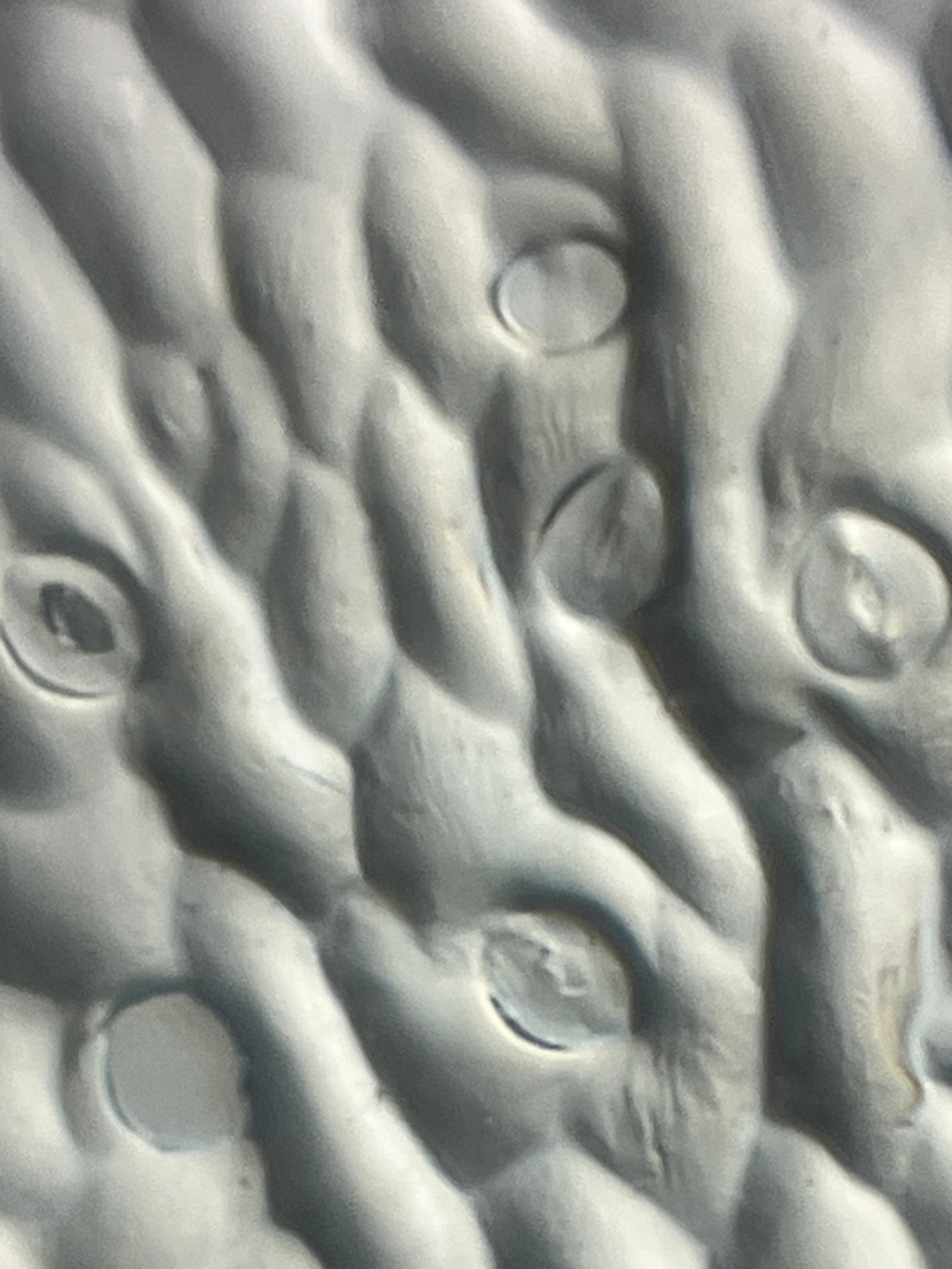Happy December Foldscopers! It might be cold outside, but we are going to enjoy the comfort of a hot cup of tea. That’s right, Foldscope is exploring the macroscopic and microscopic beauty of tea leaves.

What Is Tea?
Put simply, tea is a drink made from the leaves of the Camellia sinensis plant. All of the different types of teas, including green and white, come from this plant. So, what makes a tea classify as green or white? And what about hot drinks made from leaves other than the Camellia sinensis plant? Grab your mugs and microscopes (or better yet, a Foldscope!) to find out more.
White Tea
White tea is made from the freshly picked, unopened leaves of the Camellia sinensis plant. These leaves are usually covered with fine white hairs. These delicate white hairs are what give this tea its name, not the color of the leaves themselves.
On the macroscopic scale, loose leaf tea gives the appearance of a dried flower arrangement. I feel like the soft looking texture in the microscopic image is somehow connected to the young leaf just forming on the Camellia sinensis plant.


Green Tea
To make green tea, only the tender, open leaves from the top of the Camellia sinensis are picked, withered, and then rolled.
The macroscopic view of the loose leaf green tea leaves shows them curled up on the petri dish. Imagine the leaves steeping in the hot water and slowly opening up to release their soothing flavor and aroma. The microscopic image of a dried leaf shows a different green color than the white tea leaf. As I ponder the color difference, I'm left wondering if this somehow contributes to the flavor difference between the two?


Yerba Mate Tea
Yerba mate, though commonly called a tea, is technically not a tea. Yerba mate is brewed from the leaves of the South American holly tree, not the Camellia sinensis plant. The leaves are picked, flash heated, and then left to dry at low temperatures for a year before they are ready to be made into a drink.
The leaves of the yerba mate loose leaf blend shown below are relatively uniform in size and shape, reminiscent of tile mosaics. And on each of these “tile” pieces, we can see the stomata with the help of the Foldscope. (Refer back to the Foldscope Explores… Holly Trees for more information about holly leaf stomata.) I also love the way the microscopic image looks like the sun warming us from afar in the same way that the cup of yerba mate will warm us from within.


Herbal Tea
It may surprise many readers to learn that herbal teas are not technically “teas”. Herbal teas are made from dried flowers, fruits, and/or herbs, not Camellia sinensis leaves, and they are referred to astisanes.
Herbal teas are much more colorful and fragrant than traditional teas and look like potpourri in a dish. They provide a kaleidoscope of color, texture, and shapes under a microscope.
The colors of brewed herbal teas vary widely as can be seen by the brilliant blue tea below. The blue color comes from the butterfly pea flower, which I think looks beautiful under the Foldscope.





Have fun sampling a variety of teas not only this week but throughout the year! Share your microscopic tea leaf observations on the Microcosmos and use social media to tag us with the results of your explorations, creations, and discoveries! We love to see how Foldscopers around the world are using their Foldscopes in new and innovative ways!
Facebook: @Foldscope
Twitter: @TeamFoldscope
Instagram: @teamfoldscope
Sources:
https://www.teaclass.com/lesson_0101.html
https://www.chemistryworld.com/features/the-chemistry-in-your-cuppa/2500010.article



